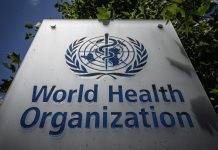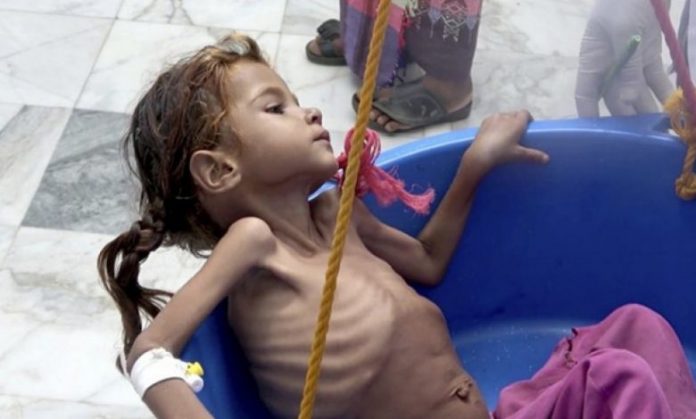From January, eight million who are going hungry in Yemen will receive a reduced food ration, while five million others who are at immediate risk of slipping into famine, will remain on a full ration, the World Food Program said.
The lowest point
The reductions come at the worst possible time for families in Yemen who are dependent on WFP’s food assistance to survive, it added.
As currency devaluation and hyper-inflation drive the economy to near collapse, inadequate food consumption has risen rapidly, affecting half of all families over the last three months.
Lack of food consumption is one of the criteria used by the World Food Program in assessing hunger.
WFP reported that food prices have more than doubled across much of Yemen through the course of the year. Meanwhile, fighting across multiple frontlines continues to force families to flee.
“Desperate times call for desperate measures and we have to stretch our limited resources and prioritize, focusing on people who are in the most critical state”, said Corinne Fleischer, Regional Director of the World Food Programme (WFP) for the Middle East and North Africa.
“The Yemeni people are now more vulnerable than ever, reeling from relentless conflict and the deepening economic crisis that has pushed millions into destitution”, Fleischer added.
From bad to worse
With food aid reduced, families will receive barely half of WFP’s daily minimum ration.
Moreover, without new funding, more severe reductions will soon be unavoidable, perhaps even cutting people from food assistance programmes completely, according to the WFP. Malnutrition treatment and school meals may also be reduced.
“Every time we reduce the amount of food, we know that more people who are already hungry and food insecure, will join the ranks of the millions who are starving”, said the WFP official.
‘Dangerously low’ stocks
Currently, more than half the Yemeni population – some 16.2 million people – face acute hunger and 2.3 million children under five, risk malnutrition, the WFP added.
“WFP food stocks in Yemen are running dangerously low at a time when budgets for humanitarian crises around the world are stretched to the limit”, Fleischer said.
WFP needs $813 million to continue to assist the most vulnerable in Yemen through May.
And in 2022, the agency will need $1.97 billion to continue to deliver vital assistance to families on the brink of famine.
The aid provided by the program in the past is reduced and is only disbursed every two or three months. The WFP’s reduction of aid has exacerbated the humanitarian catastrophe and raised the rates of food insecurity.
Millions of Yemenis face the threat of drowning into a famine due to the ongoing Saudi-led war on the country.
The United Nations warned that the shortage of funds will hamper the assistance it provides to 13 million Yemenis including thousands of children suffering from acute malnutrition.
After Saudi Arabia, backed by the US and other key Western powers, launched its war on Yemen in March 2015, the United Nations described Yemen as the world’s worst humanitarian crisis.
Observers say the lives of millions of Yemenis remain in danger unless the international community takes real measures to pressure Saudi Arabia to lift the siege it imposes on Yemen. Nevertheless, the humanitarian body is using the relief aspect to put pressure on the Yemeni People.




















